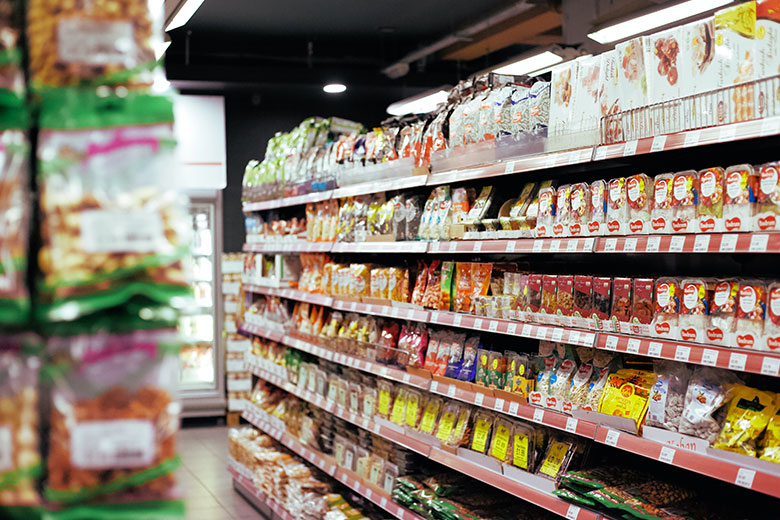Earlier, food labels were not common in India, and the detailed information was at times intimidating. Food labels were now on cereal boxes, energy bars, jams, spreads, and even bread!
We have finally entered the modern world, where we are surrounded by lot of information about almost everything under the sun, including food labels.
It is slowly becoming more and more important for us to make informed choices about the food we eat, considering the advent of ready-to-eat, ready-to-cook, and other packaged foods stacked in all the supermarkets. These contain hidden ingredients that are often disguised by marketing companies as ‘healthy’ and ‘natural’ in the way the information is presented on the food label. Hence, reading food labels and being more aware about the nutrition content, ingredient list, portion size is all necessary to eat healthy, eat clean and not be tricked into eating excessively processed and artificial food.
Let’s get straight to decoding some of the food label jargons:
- Ingredient list: This is the most important piece of information on a food label. The product ingredients are listed by the amount present – ranging from highest to lowest – which simply means that the first three ingredients comprise the maximum part of the food. The less elaborate the ingredient list is, the more natural the food product. Food products that contain sugar substitutes, artificial sweeteners, additives, and fructo-oligosaccharides often fall under the ‘unhealthy’ category.
Pro Tip: Always choose a product that contains fewer ingredients, or has a short ingredient list.
- Serving Size: This tells us about the servings per packet. It mentions the amount that people usually consume, and it is important to note that it is NOT a recommended portion to be consumed. The number of grams is indicated, and may vary depending on the food product. >
Pro Tip:Do the math before deciding on the serving size recommended for you, versus what the food label indicates.
- Calories: It provides a measure of the amount of energy one derives from a serving of that particular food from its macronutrients like carbohydrates, protein and fats. It is important to make a mental note of the calories consumed per packet or per serving. Calories from sugar are often mentioned as a sub-category under carbohydrates. A ‘good’ packaged food is usually the one with zero calories from sugar and fat.
Pro Tip: Calories from fat and sugar always need to be counted, as they are the main culprits for unexplained weight gain!
- Nutrients: An indication of the key nutrients present in the food product – total carbohydrates, protein, fat, vitamins, minerals, and dietary fiber. Generally, the words ‘sugar-free’ or ‘trans-fat free’ are used on food labels to attract buyers. However, it does not mean that the product is completely devoid of carbohydrates or fat. It may be high in refined carbohydrates and sugar substitutes. Read our blog to know more about this deceptive sugar and its various forms.
Pro Tip: A ‘sugar-free’ product can contain high carbohydrates, or a ‘trans-fat free’ product can have high fat content.
- Percent Daily Value (%DV): The daily values are the reference amount of nutrients and calories to be consumed out of the total Recommended Dietary Allowance (RDA). The % DV helps in determining whether a food serving is high or low in that particular nutrient. The food product may claim to contain a certain % DV, but it does not necessarily mean that it suffices the requirement of that nutrient.
Pro Tip: Use % DV as a guide to assess how a food product finds its place in your meal plan for the day.
Apart from this, it is also wise to watch out for misleading claims that are often added on food labels to attract the attention of health enthusiasts and vigilant buyers.
- No added sugar
- Organic or natural
- Fortified
- Low calorie
- Gluten-free or lactose-free
Always spare a few minutes to read the food label thoroughly, especially if the product is big on claims. Check this short video to know how to read labels better. Whenever a packaged food is purchased, the food label should be read, keeping in mind all the points to help you make an informed choice.
The West is slowly realizing this and shifting to healthier home-cooked options, as compared to the consumption of processed foods about earlier. It is about time, that India follows suit and returns to its roots of eating simple, home-cooked fresh meals, rather than rely on packaged foods from supermarket shelves.
Do read our other blogs on nutrition and health to get a make healthier choices. You can also download the app to serve as a health companion for all your health goals 🙂
Frequently Asked Questions (FAQs):
- What are the most important thing one should be careful about while buying packaged foods?
Ans: Ingredient lists and calories from fat and sugar.
- What are the some of the hidden terms on food products?
Ans: Sugar substitutes, sugar alcohols, dextrose, dextrin, corn syrup, and high fructose corn syrup.
- What are the three most important things to check before buying?
Ans: >Short ingredient list, zero calories from sugar and fat, and nutrition composition.
Are you willing to make these small changes in your diet? Let us know your thoughts by commenting below. Visit our page to read more blogs on nutrition, fitness, lifestyle and yoga.



0 Comments